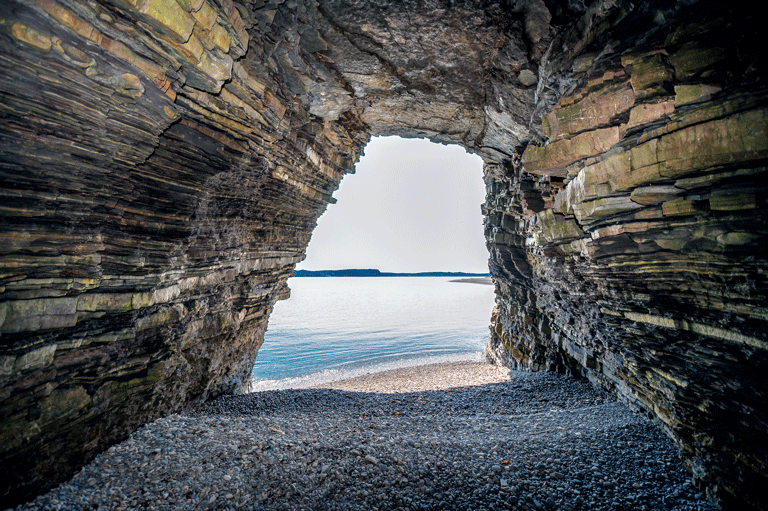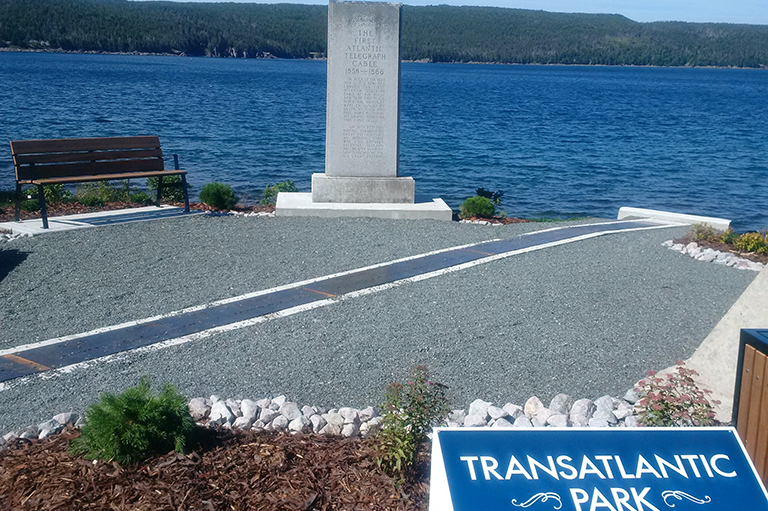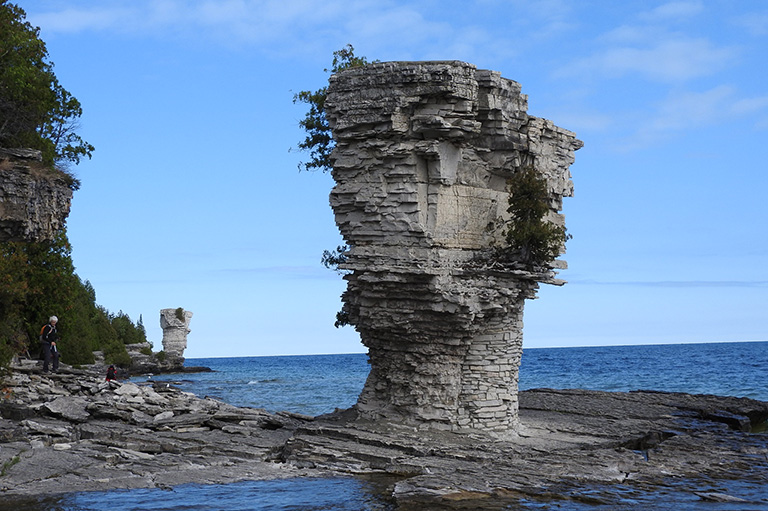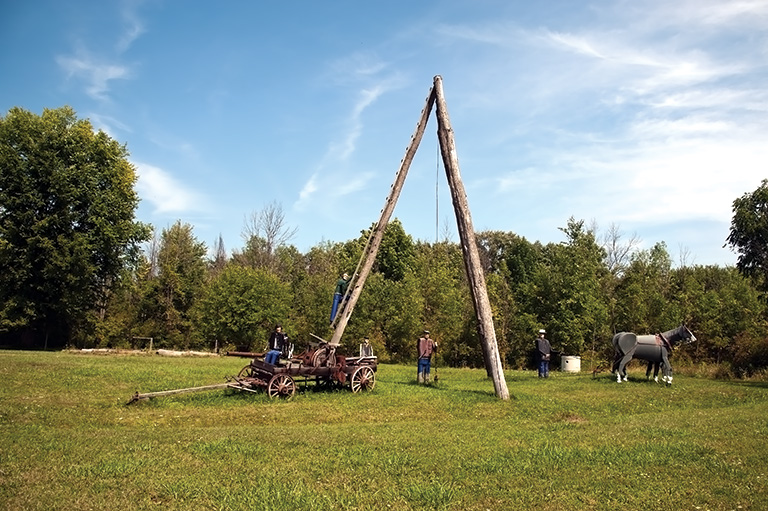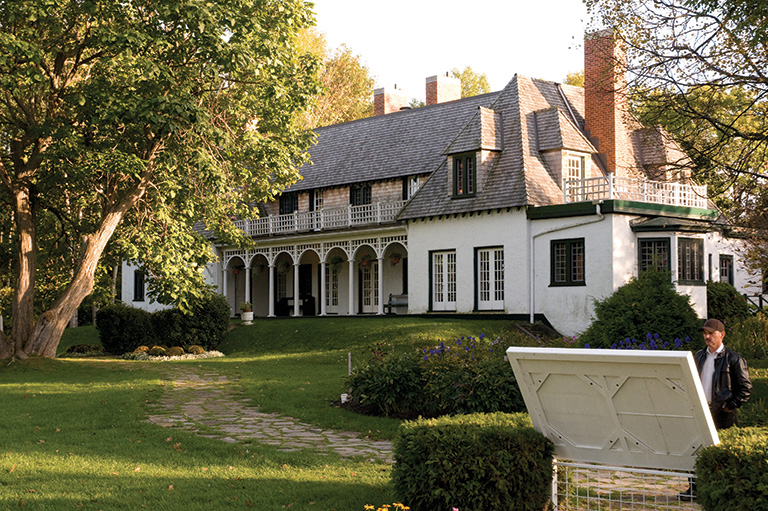Contested Fortifications
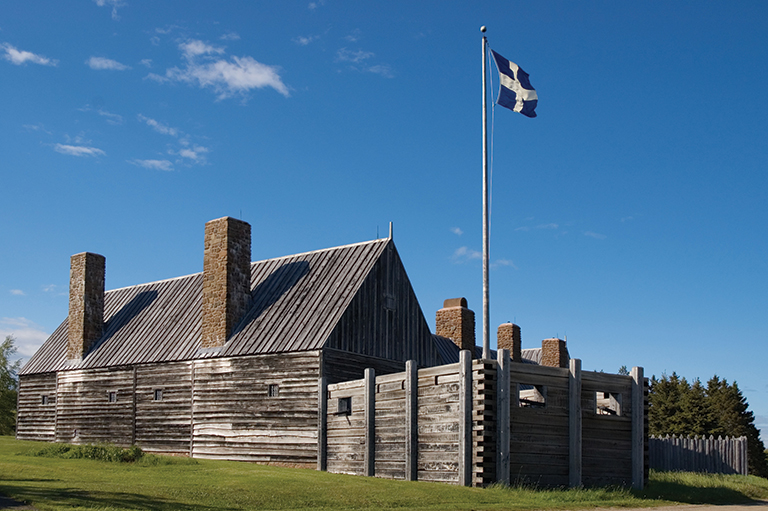
Bathed in gentle August sunshine, the small grid of heritage buildings that makes up Annapolis Royal in Nova Scotia belies the location’s long and often tumultuous history. As the afternoon shadows lengthen, I walk slowly along the unhurried confines of Lower St. George Street trying to envisage the sieges and conflicts that previously made this diminutive town one of the fiercest battlegrounds in the New World.
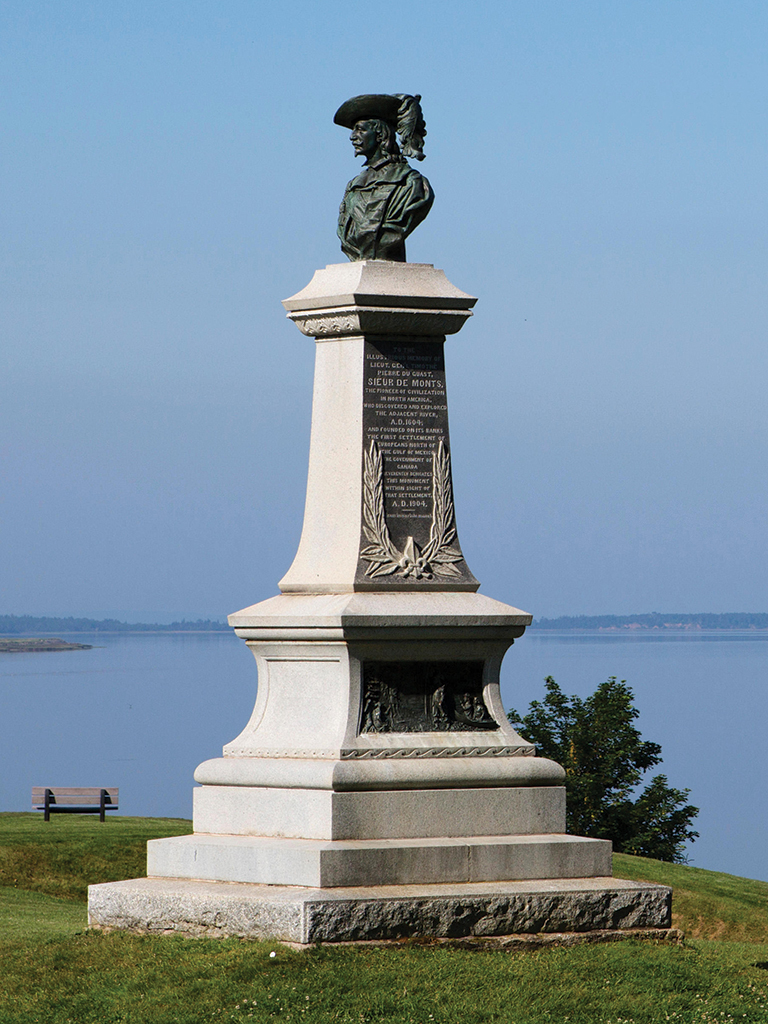
Today it’s difficult to picture that chaos. Most of the town’s handsome houses have been carefully restored, their refined Georgian, Acadian, and Queen Anne architecture imbued with layers of history. The Hillsdale House Inn, where I’ve taken a room for three nights, once hosted King George V when he was still a callow prince. The de Gannes-Cosby House, an early Acadian structure three doors away, hails from 1708 and is, purportedly, the second-oldest wooden structure in Canada. Fort Anne, where I walk atop the grassy earthen ramparts, overlooks the town’s river estuary and is a National Historic Site built on the foundations of older fortifications.
Dating from the early seventeenth century, Annapolis Royal is a direct descendant of one of the oldest European settlements to be founded in North America. In 1605, a French merchant named Pierre Du Gua de Monts established a fur-trading post known as Port-Royal eight kilometres downriver from where I am now strolling. French pioneers, with the help of the Indigenous Mi’kmaq people who had already inhabited the region for millennia, constructed a wooden fort, planted fields of crops, and built a grain mill on the banks of the Annapolis River.
Today’s Port-Royal features a replica of the famous fort, an impressive wooden bastion reworked from old plans in 1939 and now run as a National Historic Site by Parks Canada with costumed guides dispensing historical anecdotes. The original structure was burnt down by an English raiding party from Virginia in 1613, igniting a bitter Anglo-French feud that endured for 150 years. During that time, a succession of European settlements sprang up on the present-day site of Annapolis Royal, eight kilometres upriver from the ruins of Port-Royal.
The first was a short-lived Scottish colony called Charles Fort that was founded in 1629 by William Alexander, a courtier of King James I, on the site of present-day Fort Anne. Although nothing physical remains of the redoubt, I found its presence memorialized with a plaque on the fort grounds and a small museum in the officer’s barracks. While the colony lasted only three years before being ceded back to France, the Scots gave Nova Scotia its name, flag, and coat of arms.
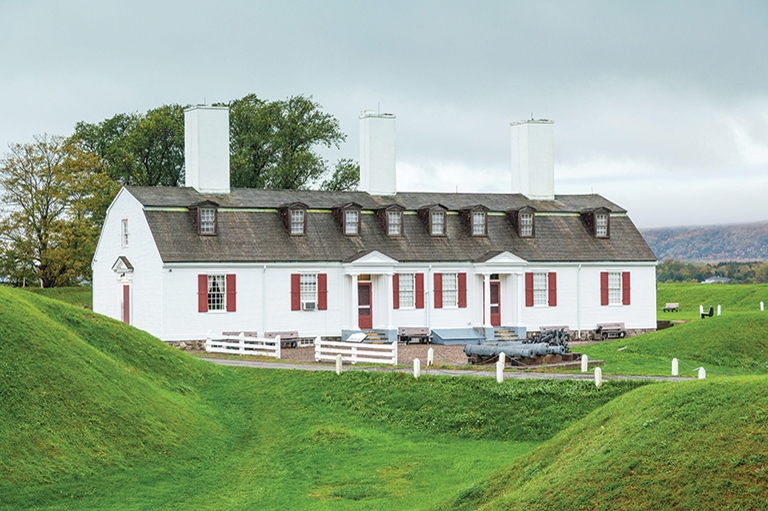
The French returned in 1635, and they re-founded Port-Royal on the site of the Scottish fort. For the next seventy-five years it was the capital of the French colony of Acadia and suffered regular British attacks. Allied with the Mi’kmaq, the Acadians fought off at least a half dozen incursions.
The town fell to British invaders in 1710, and its name was promptly changed to Annapolis Royal in honour of then British monarch Queen Anne. The takeover marked a crucial turning point in the colonial history of North America. Thereafter, the balance of power shifted from the French to the British, although the colonial animosity continued with the French laying siege to Annapolis Royal four times between 1744 and 1746.
The attractive buildings and salubrious streets that embellish Annapolis Royal today date mainly from the British era, but with the help of Internet research and some street-side historical panels I managed to uncover three monuments with pre-1710 roots. The first is Fort Anne, whose basic star-shaped layout remains definitively French, set off by the muscular stone powder magazine crafted in 1708 and half embedded in the earthen walls of the fort’s Bastion de Bourgogne.
The second is the nearby de Gannes-Cosby House, commissioned by a French officer named de Gannes de Falaise who had arrived at Port-Royal in 1701. The house was impounded after the British takeover and given to the town’s new lieutenant-governor, Alexander Cosby, to use as a personal residence. It has been in private hands since 1788.
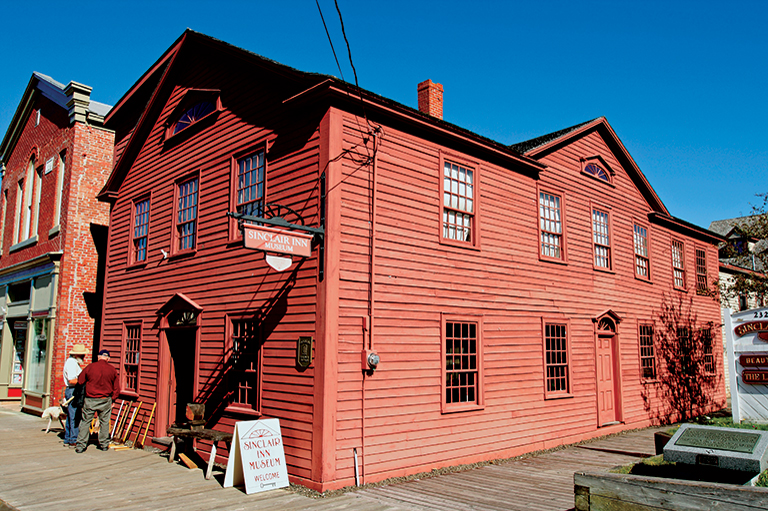
Finally, there’s the Sinclair Inn on Lower St. George Street. Now a museum, this former tavern and lodging house was initially built as two houses in 1708 and exhibits its layers quite literally. Inside, I examine exposed walls revealing early eighteenth-century wattle-and-daub insulation, while upstairs the so-called “painted room” displays nineteenth-century frescoes that were rediscovered in the 1960s.
Along with the Acadian history, British-era Annapolis Royal has plenty of historical heirlooms to decipher. Sharing a Georgian penchant for symmetry, I admire a row of four wood-framed neo-classical houses on Lower St. George Street that dates from between 1770 and 1785 and is anchored by the still functioning Bailey House bed and breakfast.
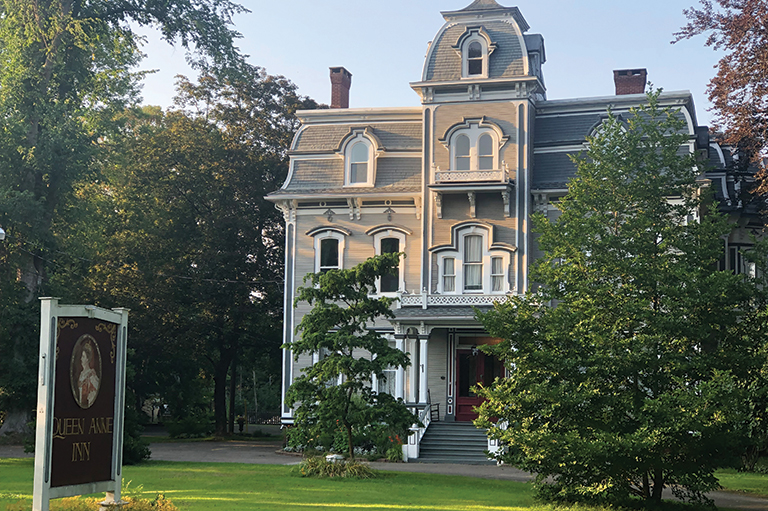
On the southern cusp of town, the nineteenth-century Queen Anne Inn is by far my favourite Annapolis Royal building — an elaborate Victorian-era B&B with a steep gabled roof and central turret. I also feel a creeping affection for the town’s miniature 1889 lighthouse that sits improbably on the main drag tucked between an antiques shop and a real estate office.
Annapolis Royal is well-preserved and full of surprises. For me, its underlying joy is the way in which it has successfully been able to hang on to its historical integrity while many other places have succumbed to tacky modernity. Once the capital of Nova Scotia, the town today supports a population of less than five hundred people. Yet, unblemished by shopping malls or theme-park attractions, it glimmers like a Canadian answer to a quiet Italian village — modest and understated but brimming with the ghosts of an illustrious past.
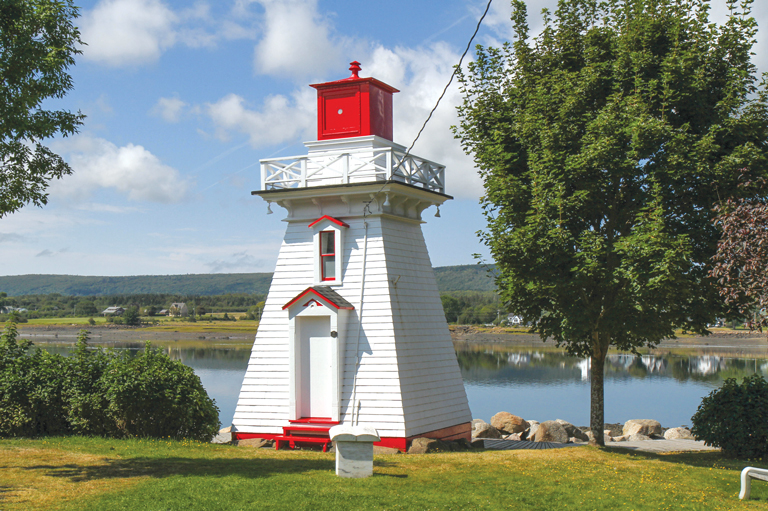
IF YOU GO
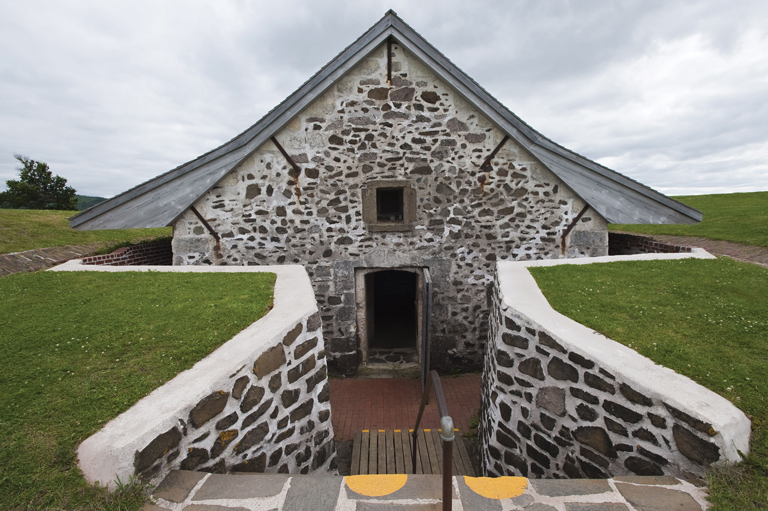
GETTING THERE: Annapolis Royal is along the shore of the Annapolis River in the Annapolis Valley, a twohour drive west from Halifax.
WHERE TO STAY: The Hillsdale House Inn offers rooms and breakfast in a heritage property built in 1859.
EXPLORE: The Historical Association of Annapolis Royal offers customized tours. Guided tours are also available at Fort Anne National Historic Site, while costumed interpreters at Port-Royal National Historic Site portray the experiences of French settlers. The Annapolis Heritage Society runs the Sinclair Inn Museum.
EAT AND DRINK: The Whiskey Teller is a bar and wood-panelled restaurant that offers pub grub, local beer, and whisky.
Themes associated with this article
Advertisement
You might also like...

Canada’s History and its partners offer unique, history-based tours at home and abroad throughout the year.
Help support history teachers across Canada!
By donating your unused Aeroplan points to Canada’s History Society, you help us provide teachers with crucial resources by offsetting the cost of running our education and awards programs.


